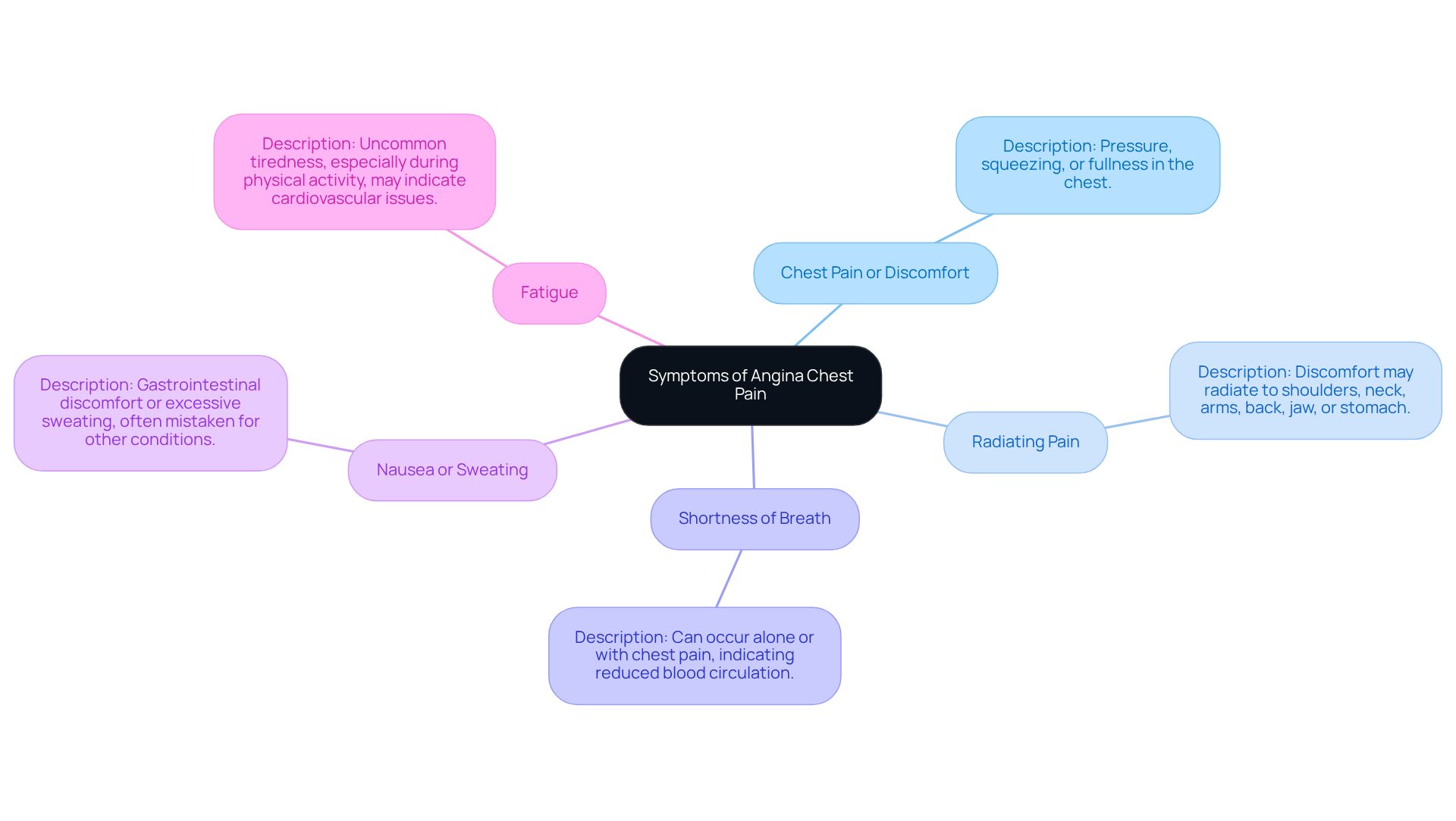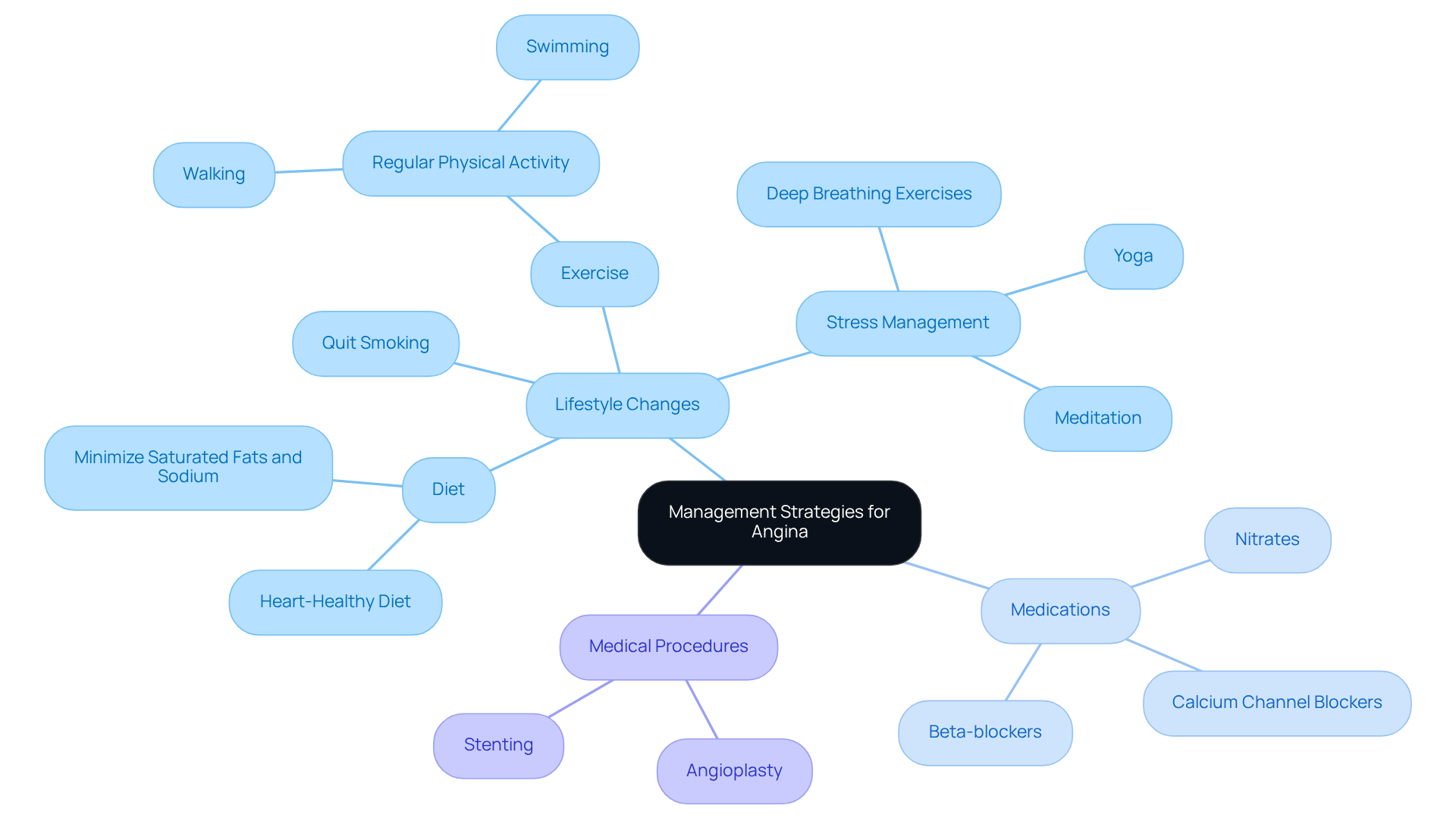


Elderly patients often experience concerns about angina chest pain, but there is hope for relief. Through a thoughtful combination of lifestyle changes, medications, and medical procedures tailored to individual needs, significant improvements can be made. It’s essential to focus on a heart-healthy diet, engage in regular exercise, manage stress effectively, and consider appropriate medical interventions. These strategies not only alleviate symptoms but also enhance overall heart health. Remember, you are not alone in this journey; support is available to help you navigate these changes.
Understanding angina is crucial, particularly for our elderly loved ones, as it can significantly affect their quality of life. This article explores effective management strategies and lifestyle modifications, along with the importance of recognizing symptoms that can help seniors alleviate chest pain and enhance their heart health.
Have you or a loved one ever felt uncertain about how to navigate these challenges? With various types of angina presenting unique hurdles, it’s essential to know how elderly patients can find effective relief and support.
Together, we can explore these important topics with care and compassion.
Angina pectoris refers to chest pain that arises from reduced blood flow to the heart muscle. Many patients describe this discomfort as a feeling of pressure, squeezing, or heaviness in the chest. Understanding the various types of angina is essential for recognizing symptoms and seeking timely care.
Understanding these types of angina chest pain not only aids in identifying symptoms but also empowers patients to seek . By managing risk factors such as high blood pressure and cholesterol levels, patients can significantly reduce their chances of developing coronary heart disease, a leading cause of chest pain.
At Amavita, we are dedicated to revolutionizing cardiac care through our CardioElite™ program, which combines advanced diagnostics with proactive management to improve patient outcomes and minimize readmissions. Remember, you are not alone on this journey; we are here to support you every step of the way.

Signs of chest pain can present differently in older patients, making awareness essential for effective management. Common indicators include:
Recognizing these symptoms is vital for . At Amavita Heart and Vascular Health®, our CardioElite™ program utilizes innovative AI-powered diagnostic technology, including a portable, FDA-cleared AI ultrasound for bedside cardiac diagnostics. This technology offers real-time assistance for precise imaging and produces reports on cardiac structure and function within minutes. High-risk patients, such as those with diabetes, hypertension, or a family history of heart disease, benefit most from our comprehensive evaluations and personalized care, enhancing their overall health outcomes. We are here to support you every step of the way.

Managing chest pain effectively can feel overwhelming, but with a multifaceted approach, you can take control of your health. This includes , medications, and, when necessary, medical procedures. Here are some key strategies to consider:
Lifestyle Changes:
Medications:
Medical Procedures: In specific situations, procedures like angioplasty or stenting may be necessary to enhance blood circulation to the heart, particularly if symptoms persist despite optimal medical therapy. Current guidelines suggest considering conservative antianginal treatment before moving to invasive procedures.
Regular follow-ups with your healthcare provider are crucial for monitoring your condition and adjusting treatment as needed. By implementing these strategies, you can take significant steps toward managing angina chest pain and enhancing your overall heart health. Remember, you are not alone in this journey; support is always available.

Understanding and managing angina chest pain is vital for elderly patients who seek relief and improved heart health. By recognizing the different types of angina, from stable to variant, individuals can better identify their symptoms and seek timely medical attention. This proactive approach not only enhances awareness but also empowers patients to take charge of their cardiovascular health.
Throughout this article, we have highlighted key strategies for managing angina, including:
Ultimately, the journey to managing angina chest pain is a collaborative effort that requires awareness, education, and support. By taking these steps, elderly patients can significantly improve their quality of life and heart health. Embracing these management strategies not only leads to symptom relief but also fosters a sense of empowerment and control over one’s health, reinforcing the comforting message that proactive care can lead to better outcomes.
What is angina pectoris?
Angina pectoris refers to chest pain that arises from reduced blood flow to the heart muscle, often described as a feeling of pressure, squeezing, or heaviness in the chest.
What are the different types of angina?
The different types of angina include stable angina, unstable angina, variant angina (Prinzmetal's discomfort), and microvascular angina.
What is stable angina?
Stable angina is the most common form of angina, typically triggered by physical exertion or stress, and it usually eases with rest. It affects about 4.4% of U.S. adults aged 65 and older.
What is unstable angina?
Unstable angina is more severe and unpredictable, potentially occurring at rest or with minimal exertion, and lasting longer than stable angina. It requires immediate medical attention due to a higher risk of cardiac events.
What is variant angina?
Variant angina, also known as Prinzmetal's discomfort, results from spasms in the coronary arteries and can occur even at rest, often in cycles.
What is microvascular angina?
Microvascular angina affects the small blood vessels of the heart and may not be detectable through standard tests. Nearly 50% of patients with chest pain experience non-obstructive coronary artery disease (ANOCA), leading to discomfort without visible blockages.
How can managing risk factors help with angina?
Managing risk factors such as high blood pressure and cholesterol levels can significantly reduce the chances of developing coronary heart disease, which is a leading cause of chest pain.
What programs does Amavita Heart and Vascular Health® offer for angina management?
Amavita offers the CardioElite™ program, which combines advanced diagnostics with proactive management to improve patient outcomes and minimize readmissions.